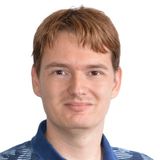
This is an AI for Health MSc project. Students are elgible to receive a monthly reimbursement of €500,- for a period of six months. For more information please read the requirements.
Clinical Problem
In prostate cancer, patient treatment for a major part is determined by the subjective morphological
assessment of removed tissue, the Gleason Grade. However, we know that other biomarkers have
prognostic potential, such as cell division markers as a surrogate for tumor growth (Ki-67 staining) or
the presence and composition of immune infiltrates (CD3 / CD8 staining). However, these markers are
not used in practice because it is impossible to quantify them accurately across large swathes of tissues
by human experts. We propose to develop AI system which automatically quantify these biomarkers
and combines that with existing models for tumor segmentation and grading. This will allow us not just
to quantify the markers within digitized microscopy images, but also identify their spatial arrangement.
Solution
The student will need to adapt and improve existing methods to work across a variety of different
immohistochemical stains. Currently our group has both detection (YOLO) and segmentation (U-net)
based models for a single immunohistochemical stain (CD3) Improving these methods includes better
handling of overlapping and connecting cells and improving generalization to different counterstains
(e.g. brown, red, green).
Data
We have multi-center data with 4 immunohistochemical stains (CD3, CD8, PD-L1, Ki67) from around
400 patients. Data is source from Radboudumc, Rijnstate Hospital and Erasmus Medical Center. Each
patient has between 4 – 12 distinct whole-slide images for each stain. For each patient we have follow-
up data for at least 5 years (biochemical recurrence yes/no) with which we can correlate the obtained
cell counts.
Results
The main innovation will be an IHC quantification algorithm that can generalize to a variety of IHC
stains with different staining profiles and counterstains. Such an algorithm would be valuable for many
clinical applications, although it would have to be further validated for different organs.
Embedding
The student will be supervised by a research member of the Diagnostic Image Analysis Group and Computational Pathology Group whose research is dedicated to analyses of histopathological slides with deep learning techniques. We have a strong collaboration with pathology experts in the field of cancer grading. The student will have access to a large GPU cluster.
Requirements
- Students Artificial Intelligence, Data Science, Computer Science, Bioinformatics in the final stages of their Master education.
- You should be proficient in python programming and have a theoretical understanding of deep learning architectures.
- Basic biological / biomedical knowledge is preferred.
Information
- Project duration: 6 months
- Location: Radboud University Medical Center
- More information can be obtained from Geert Litjens (mailto: geert.litjens@radboudumc.nl)

